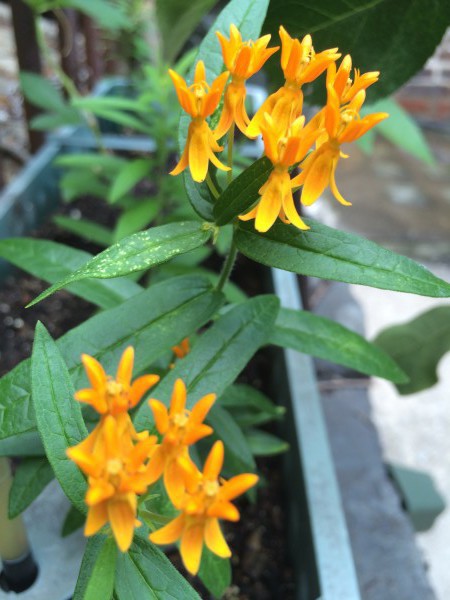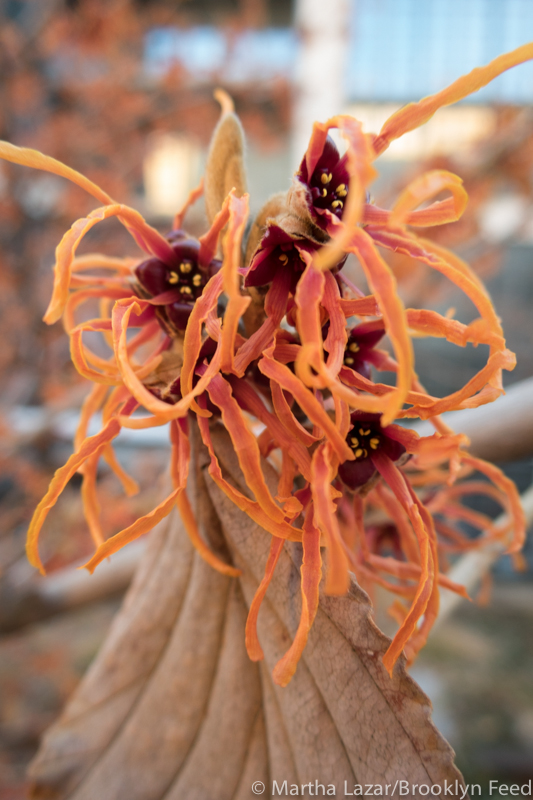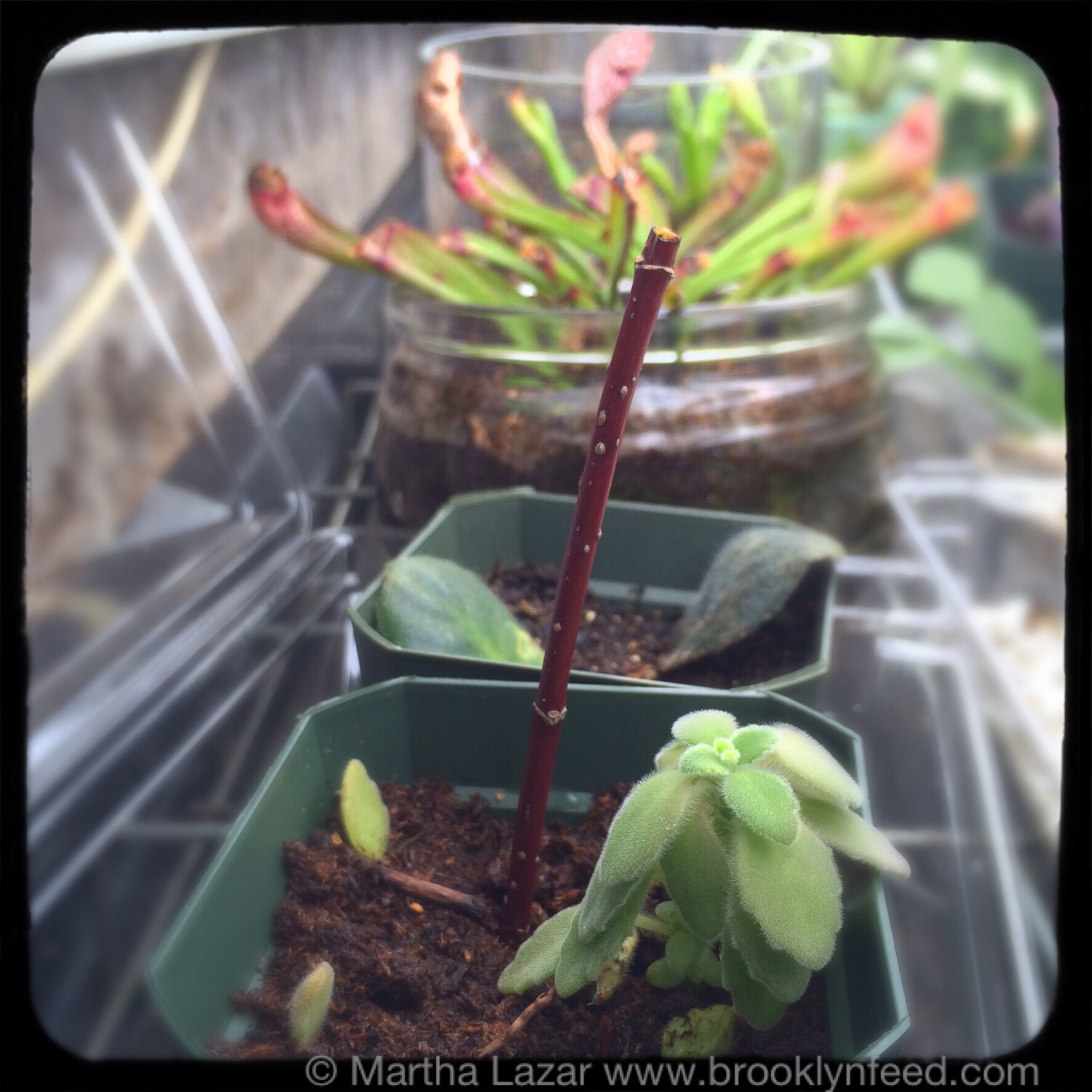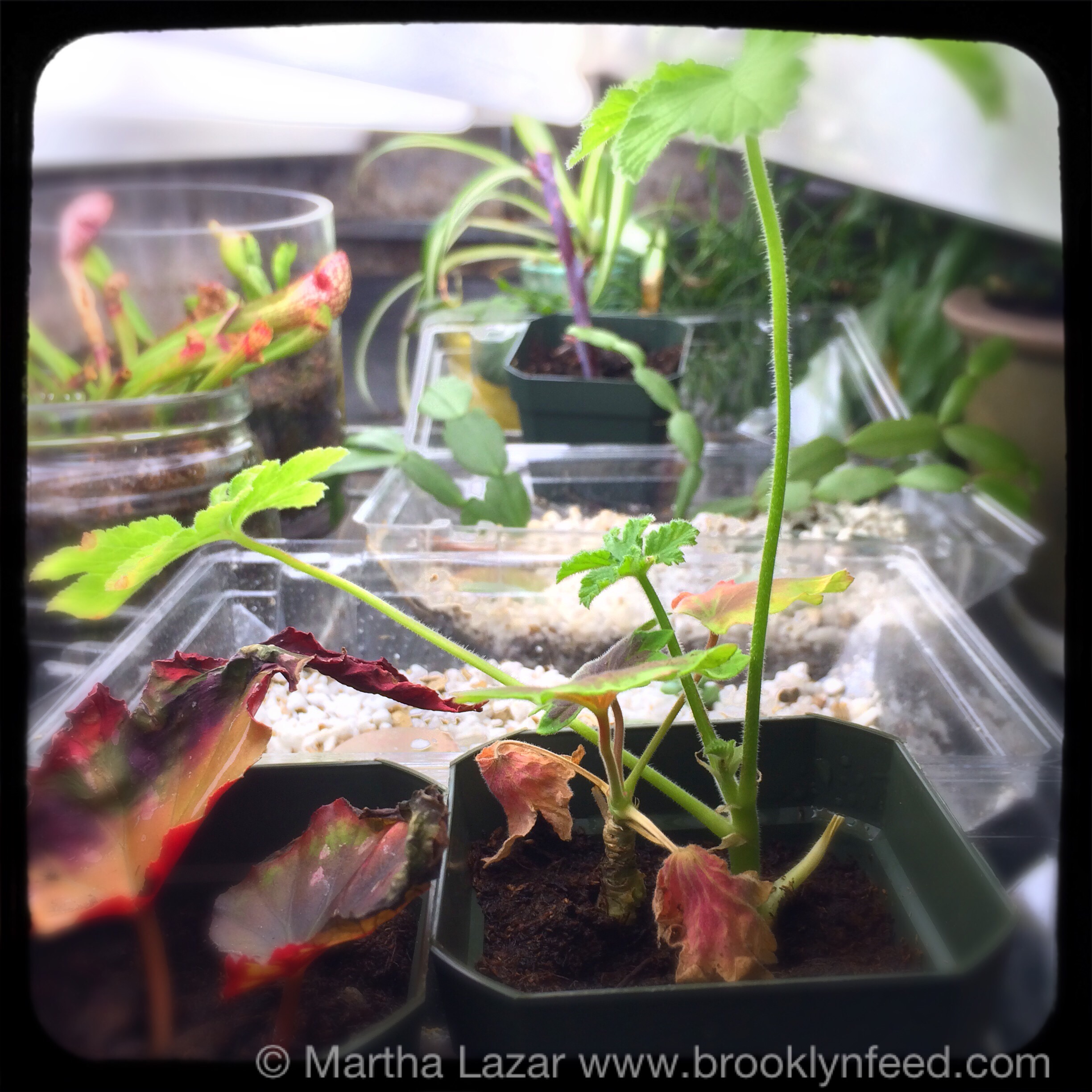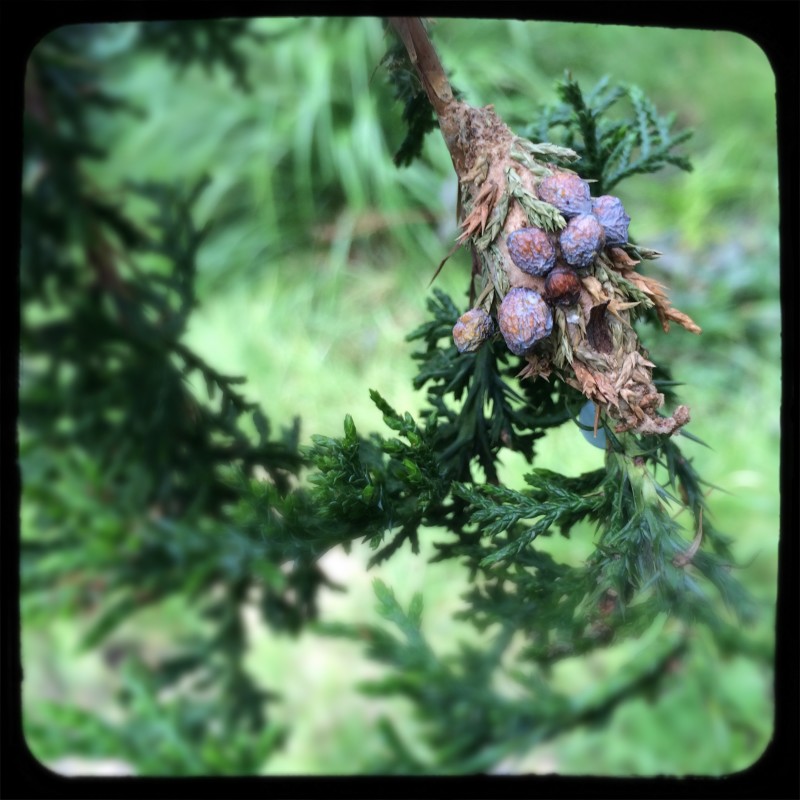
The other day I was working on the High Line and noticed this little cluster in one of the juniper trees. At first glance it looks as though it could be a kind of pinecone on the tree, but it’s not. It is a case made from silk and plant materials constructed by the bagworm in its larval stage.
If you look closely, you’ll see that there’s an opening towards the bottom of the bag. That allows the larva to poke its little head out and eat more of the tree. Needless to say, this isn’t good for the tree. I looked more closely and the tree was absolutely covered with these bags. The tree next to it was covered as well, but there weren’t any on other trees.
Manual removal is the best method for eliminating this pest. You can just trim the top of the bag from the branch it is sticking to. I think we managed to cut down about 100 bagworms between the two trees!
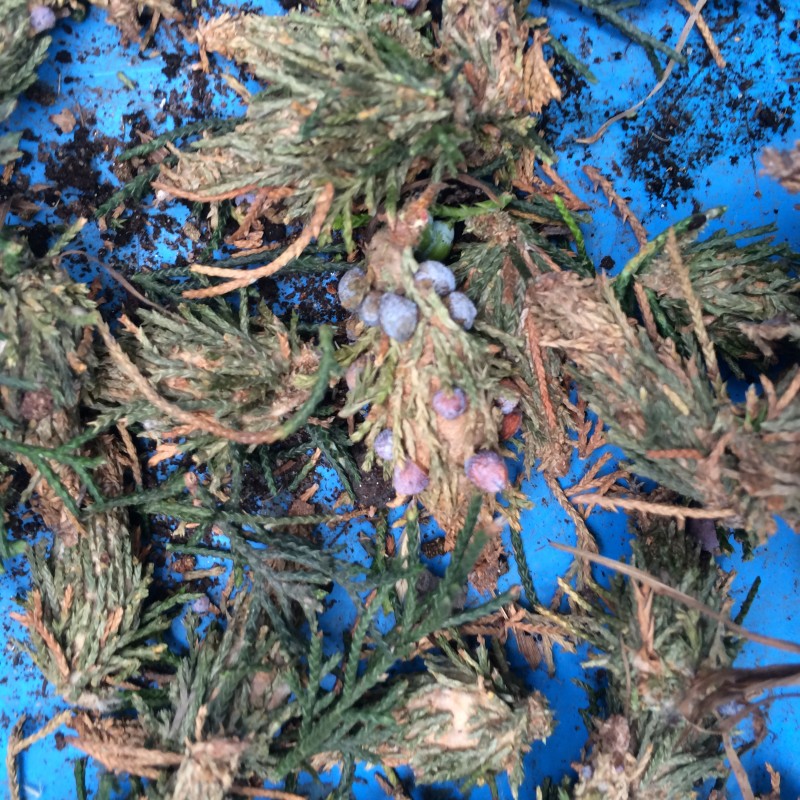 As I was cutting them down, I dropped them into a plastic bucket. I wasn’t expecting the larvae to emerge from their bags. They kind of poke their little brown necks out and the bag looks an awful lot like a hula skirt. Fascinating and disgusting all in one go.
As I was cutting them down, I dropped them into a plastic bucket. I wasn’t expecting the larvae to emerge from their bags. They kind of poke their little brown necks out and the bag looks an awful lot like a hula skirt. Fascinating and disgusting all in one go.
bagworms from Martha Lazar on Vimeo.

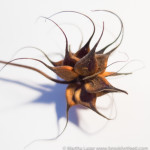
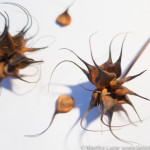
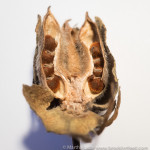
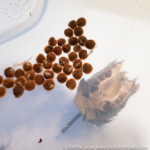
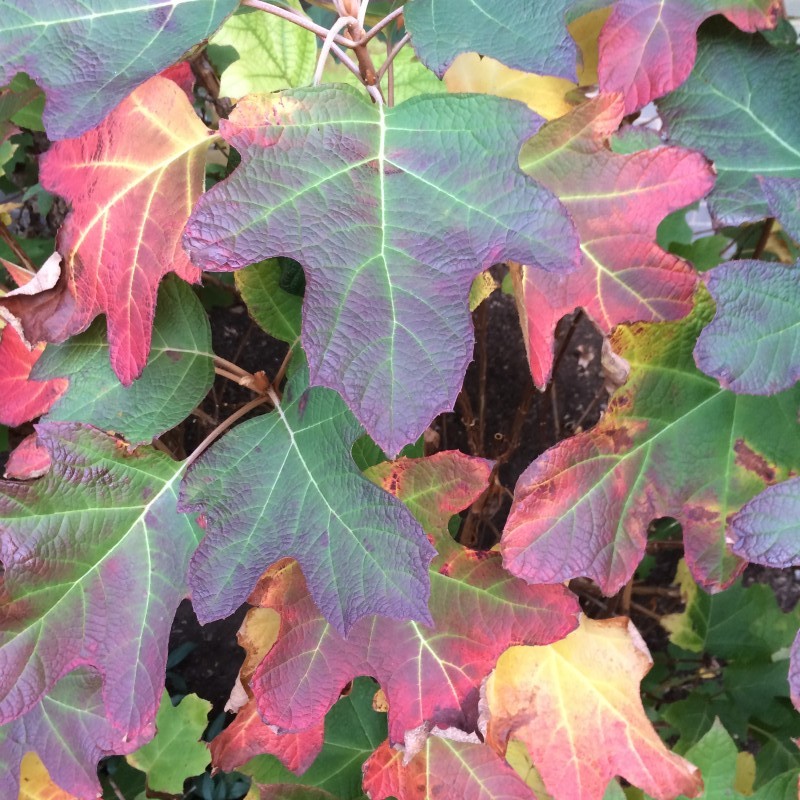
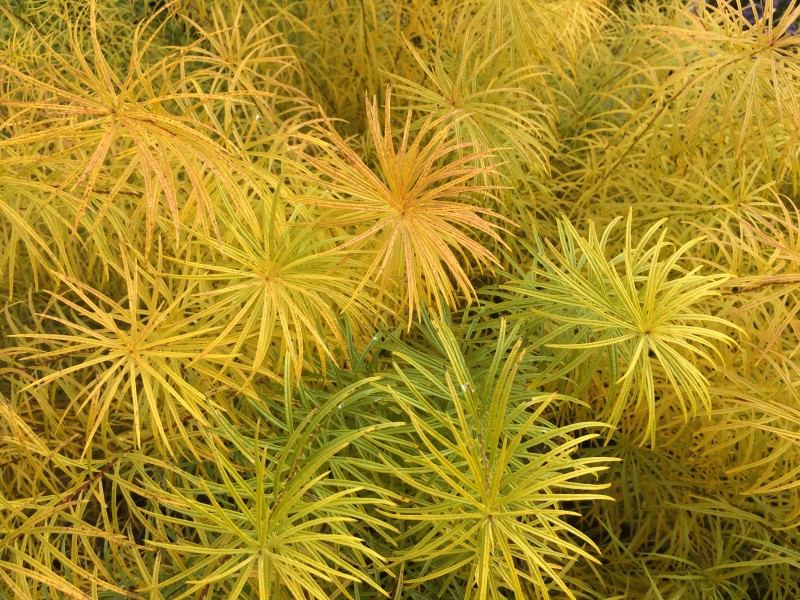
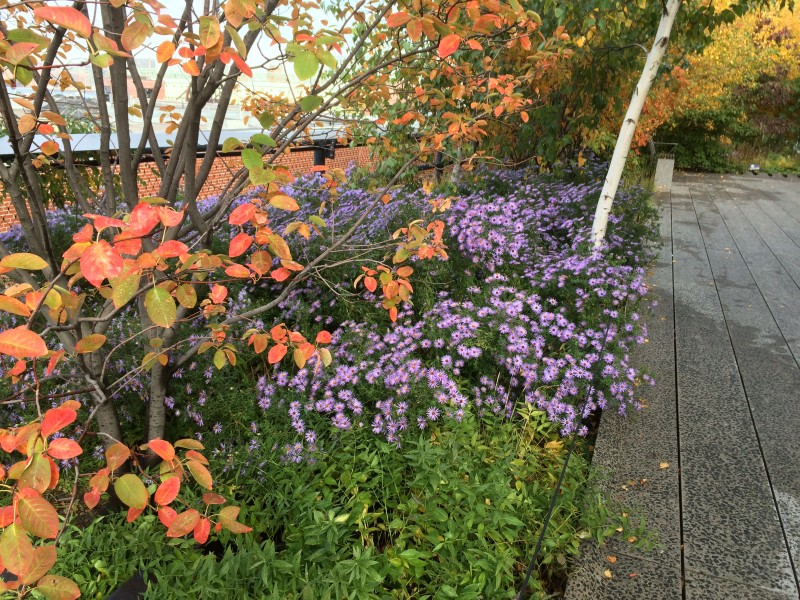
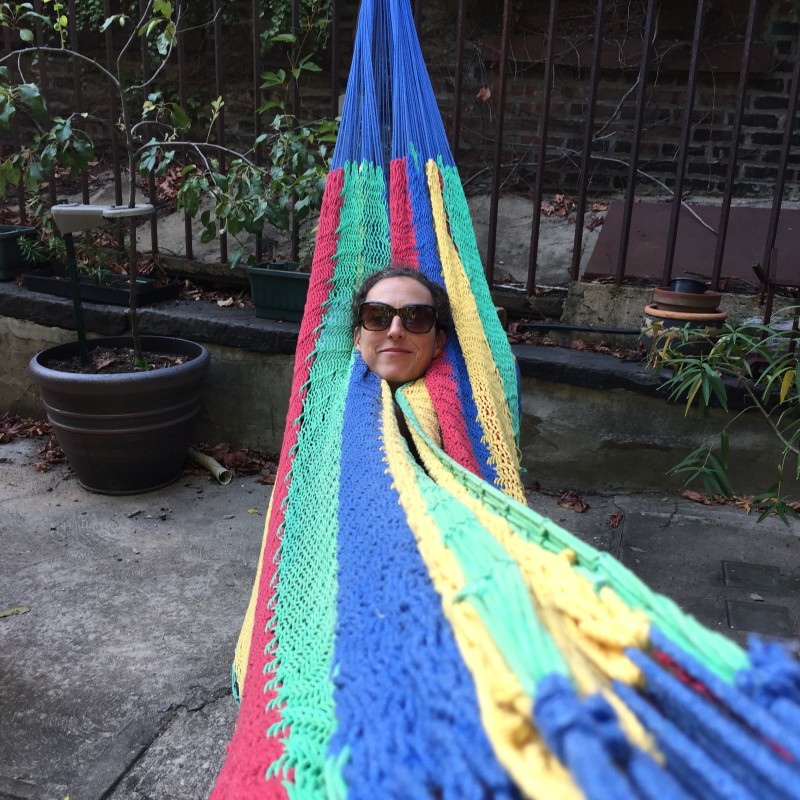

 As I was cutting them down, I dropped them into a plastic bucket. I wasn’t expecting the larvae to emerge from their bags. They kind of poke their little brown necks out and the bag looks an awful lot like a hula skirt. Fascinating and disgusting all in one go.
As I was cutting them down, I dropped them into a plastic bucket. I wasn’t expecting the larvae to emerge from their bags. They kind of poke their little brown necks out and the bag looks an awful lot like a hula skirt. Fascinating and disgusting all in one go.